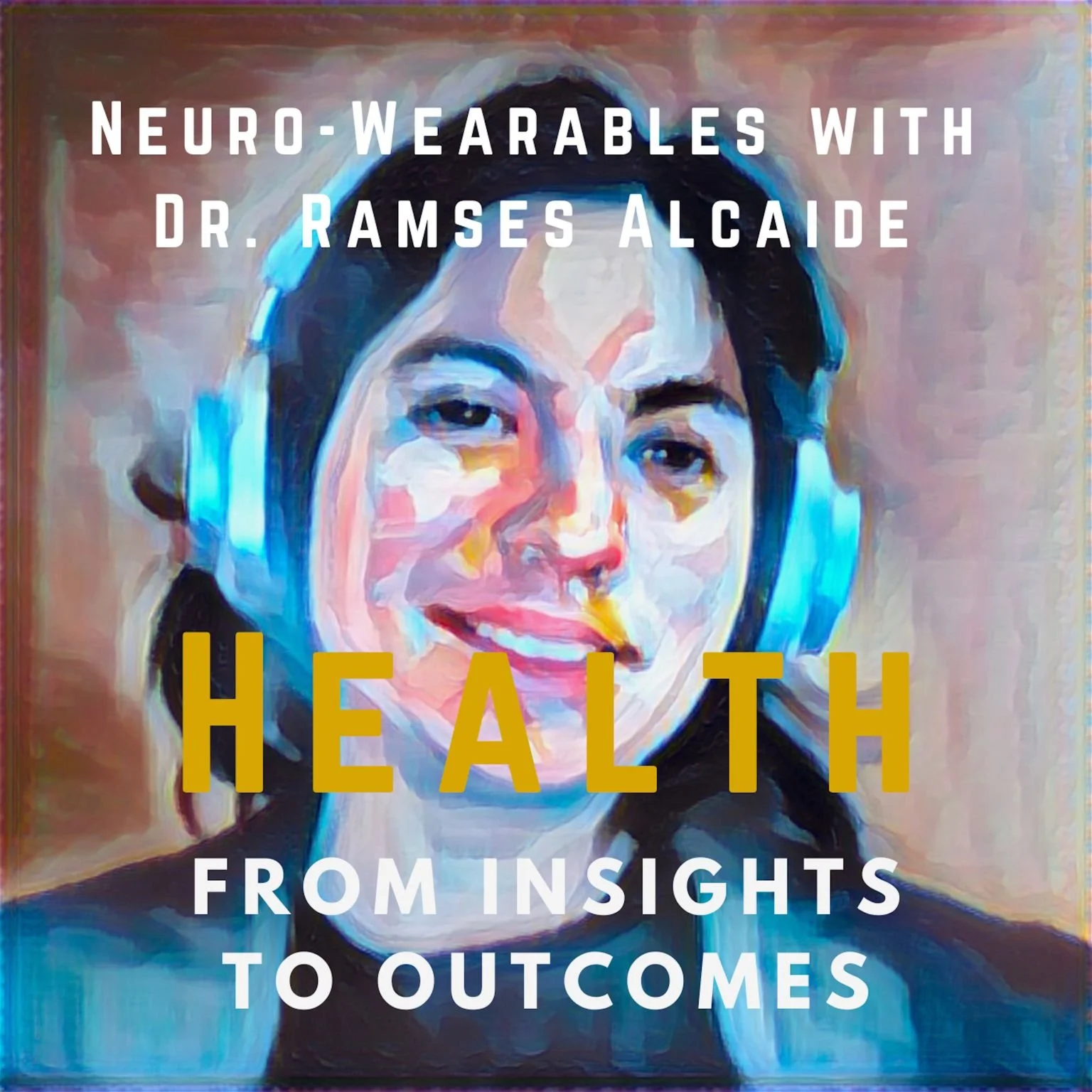Focus on Physicians:
Insights, Ideas, and Strategies
Art, Meditation, and Medical Practice: Johannes Vermeer's The Geographer
Art therapists use art as a way to explore complicated emotions and improve self-awareness for people experiencing physical or mental health challenges. But art offers many other paths to well-being and connection, especially for physicians and others engaged in the hard work of healthcare.
For centuries, art and science were deeply intertwined, yet in the modern era we often lose sight of the ways that art can illuminate medical practice. In this article I’ll show you how engaging with art mindfully, through what some call contemplative viewing, can spark both introspection and connection.
An earlier version of this article originally appeared on this site in July 2022.
Art therapists use art as a way to explore complicated emotions and improve self-awareness for people experiencing physical or mental health challenges. But art offers many other paths to well-being and connection, especially for physicians and others engaged in the hard work of healthcare.
For centuries, art and science were deeply intertwined, yet in the modern era we often lose sight of the ways that art can illuminate medical practice. In this article I’ll show you how engaging with art mindfully, through what some call contemplative viewing, can spark both introspection and connection.
In these unscripted encounters with an artist’s inner landscape, we may access a deeper understanding of our patients and ourselves as complex, multifaceted human beings.
Girl with Pearl Earring by Johannes Vermeer, ca.1665; credit Mauritshuis, The Hague
The Enduring Legacy of Johannes Vermeer
Johannes Vermeer, a Dutch painter of the 1600s, is best known for his intimate interior scenes. His Girl with a Pearl Earring remains his most iconic work, inspiring a bestselling novel in 1999 and a film adaptation in 2003.
Sadly, Vermeer was not well recognized or appreciated during his lifetime, and he struggled financially. Vermeer died at the age of 43, leaving his wife with 11 children to care for. The cause of death is unclear, but it was said that severe financial stress played a role. Today, only 34 of Vermeer’s paintings are known to exist.
Vermeer’s paintings are powerful not only for their timeless beauty, but because of his strong connection to his subjects, and his emphasis on their humanity.
Johannes Vermeer, The Geographer, ca: 1669; Image credit Städel Museum, Frankfurt am Main
The Geographer: A Moment Out of Time
As a photographer, Vermeer's The Geographer calls to me for its almost photographic frame of reference. This is not surprising, given Vermeer's purported use of the camera obscura, an early form of photographic projection that creates an image on a wall. As in an unposed photograph capturing a moment in time, The Geographer seems to be unaware of the painter, absorbed in his own thoughts.
Vermeer uses the light and shadowing to shape the space of the gentleman's study, creating a strong left-to-right diagonal perspective. Diagonals are important in art, because they often suggest action and energy.
Your eye might first notice the illuminated face of the man. From there, you may find yourself traveling from left to right as the line of the light echoes the diagonal of his desk, the movement of the shadow behind the cabinet and even the pattern of tapestry that is draped over the table. The instrument he casually holds in his hand repeats this same diagonal and intentional feeling.
The Geographer's face is illuminated in much the same way as the globe above him. This reference to the wider world and his Japanese-style robe tells a story of a man who has a broad and diverse experience of life.
The colors in this painting serve to unify the composition and create a soft sense of boundary in which this man lives and works. The gorgeous oranges and blues, as complementary colors, create a lush and intimate feeling. We see them in his robe, the tapestry, the small chair in the background, and in the shade of the light entering the room.
In color theory, blue evokes the mind, reflection, serenity, and the intellectual, while yellow is a color of creativity and confidence. The slash of orange that makes up the kimono’s collar speaks of passion, but perhaps of frustration as well. And the soft brown conjures nature and quiet.
The variety of textures in the textiles and furniture serves to elevate the sense of intimacy and deepen the richness of these colors. There is a sense of balance between the foreground and the background, holding The Geographer in the middle of the painting, and setting him firmly in the world.
Experiencing Art Mindfully
Art can be a doorway to mindful exploration. Sometimes this is called slow looking. You don’t have to be an expert in art or a mindfulness practitioner. Even just a few minutes with a work of art can allow your mind to clear and give you space to create a sense of connection to another human being. The Geographer is a perfect stepping off point for this kind of exploration.
To drop into a meditative mindset, allow the experience of Vermeer’s painting to open a feeling of spaciousness and presence. Notice your breath as you spend time with this work of art, allowing each inhale and exhale to soften your mind into a relaxed awareness. Feel your body loosen, even if just a little. If possible, give yourself at least three minutes of mindfulness before moving on with the rest of your day.
This experience is available to you, no matter where you might find yourself. You don’t have to turn to the Old Masters to experience the meditative power of art. If you’ve ever lost yourself in a song, you know that to be true. Abstract art, photography, sculpture—all can be portals to mindful exploration. So can the act of creating.
For physicians, brief moments of mindful connection can be deeply restorative. In the midst of a busy day, slowing down can help you to reconnect to a sense of balance and perspective. Vermeer’s work is one reminder that presence and awareness can reveal not only your own light but also the humanity of those you care for.
This post contains Amazon affiliate links. I may earn a small commission when you click on the links, at no additional cost to you. These commissions help to support the website.
If you’ve enjoyed this article and would like to stay in the loop for more insights on creating a sustainable, fulfilling, and happy life as a physician, sign up for my newsletter or reach out on my website. I’d love to hear from you.
And if you’d like to schedule a complimentary introductory meeting with me, click the link below.
The Power of the Pause: Creating Engagement and Presence
What if you took the concept of taking a timeout pause out of the OR or procedure lab and into the other demanding parts of your day? Taking a moment to come up for air between office visits, meetings, or complex patient care could help to clear your mind and reset your focus. But very few of us actually do this.
Research from Microsoft's Human Factors Lab supports the idea that taking a personal pause can not only help you to reset but may even improve your engagement with your next patient or procedure. In this article, I’ll show you how you can work brief moments of mindfulness into your day, without slowing you down.
An earlier version of this article appeared on this website in November 2023.
If you’re a surgeon or proceduralist, you already know the power of a timeout. That intentional pause before a procedure—where the entire team stops to confirm the plan, clarify roles, and ensure nothing has been missed—is more than a safety checklist. It’s a brief, structured moment of presence.
What if you took the concept of taking a pause out of the OR or the lab and into the other demanding parts of your day? Taking a moment to come up for air between office visits, meetings, or complex patient care could help to clear your mind and reset your focus. But my guess is that very few of us actually do this.
Backed by Data: The Power of a Brief Reset
Research from Microsoft's Human Factors Lab supports the idea that taking a personal pause can not only help you to reset but may even improve your engagement with your next patient or procedure.
Since this was Microsoft, the study looked at the way people engaged in meetings. The 14 subjects were tasked with wearing an EEG while participating in video meetings. Each meeting lasted 30 minutes. On one day, they took part in four back-to-back meetings, without a break. On the other, each meeting was followed by a 10-minute pause. Instead of simply checking their phones, the participants meditated with the Headspace app.
The results were striking: analysis of brain wave activity revealed that even a short meditation pause led to increased engagement in the meeting that followed.
Conversely, with no pause, there was EEG evidence of greater stress during the next meeting.
We often equate productivity with hours slogged and logged. But this study—and others like it—suggest that sustained engagement may be a more meaningful, and healthier, metric.
The business world may embrace concepts like mindful pauses, but applying them in healthcare can be more challenging. Between the unending inbox, your dwindling support staff, and the push to do just one more thing, the pace can feel relentless.
But that’s exactly why building in brief, intentional moments of stillness—even just a breath between tasks—can be so powerful. These moments give you a chance to regather and reharness your energy and your focus.
Practical Strategies for Pressing Pause
How can you begin to practice taking a pause? It’s not always practical to take a 10-minute break for meditation in the middle of a busy day. But even a few mindful moments can help. Here are a few practical tips that can help you to create a little breathing space for yourself and to be more present for your patients:
Breathe Mindfully
Take a few deep, intentional breaths before going in to see a difficult or complex patient. Focus on the sensation of the breath entering and leaving your body. This simple act can help anchor your awareness to the present moment.
Body Scan
Conduct a quick body scan to release tension. Start from the top of your head and gradually move down to your toes, paying attention to any areas of tightness or discomfort. Allow these areas to relax, even if it’s just a little.
Mindful Observation
Take a moment to observe your surroundings without judgment or reactivity. Notice the colors, textures, and sounds in your environment. This brief shift in attention can provide a mental break and promote a sense of calm.
Name What You’re Feeling
Before moving on to the next patient or task, pause to mentally name what you’re feeling. That could be anything. Perhaps it’s overwhelmed, focused, frustrated, or calm. It doesn’t really matter whether it’s positive, negative, or neutral. This brief check-in helps increase your emotional awareness and gives you a chance to reset before shifting gears.
Feel Your Feet
As you’re walking down the hall or in from the parking lot, take a moment to bring your awareness to the sensation of your feet on the ground. Feel the pressure and the contact as your shoes connect with the floor. This small act of grounding can quickly bring you back to the present.
Set an Intention
Before a meeting or procedure, pause for a few seconds and mentally set an intention. Perhaps it’s “Stay focused,” “Listen with awareness,” or “Lead with presence.” A clear intention can shape how you show up, even in high-pressure moments.
Hand Over Heart
If you’re feeling overwhelmed or scattered, place your hand over your heart and take a few deep breaths. This simple gesture engages your parasympathetic nervous system and can create a sense of grounding and self-compassion.
From Personal Practice to System Shift
Taking a mindful pause is not just a momentary escape from a hectic schedule. By taking a few moments of stillness to reset, you access a powerful way to recharge your energy, sharpen your focus, and deepen your connection with the people you care for. Over time, these brief pauses become an investment in your well-being and in the quality of your presence.
It’s time for healthcare organizations to embrace what companies like Microsoft have already realized: sustainable performance requires space to pause. These moments can’t just be the responsibility of the individual—they must be supported by the system. When organizations stop trying to fill every second and instead allow time for reflection and reset, they empower physicians to stay engaged, energized, and able to deliver their best care.
If you’ve enjoyed this article and would like to stay in the loop for more insights on creating a sustainable, fulfilling, and happy life as a physician, sign up for my newsletter or reach out on my website. I’d love to hear from you.
And if you’d like to schedule a complimentary coaching discovery session, click the button below.
Mindfulness: A Surprisingly Practical Tool for Time Management
When you’re busy and feeling time-pressured, mindfulness may seem to be an uneasy, even unwelcome, construct. Who has time for it? Yet it turns out that simple mindfulness practices can help you to reframe and de-escalate the struggles of the day. In this article I will show you how using mindfulness can create the mental space you need to confidently and calmly manage patient care while protecting your precious time.
As a doctor you’ve studied, trained, and practiced for years, probably decades, to provide the best care for your patients. But as our world has become increasingly tech-driven and connected, the pressures from both within and outside of the healthcare workspace for your time and attention have multiplied.
Whether it’s pings from the EHR, text messages from the hospital, urgent calls from colleagues or families, or the never-ending torrent of emails, your attention has become more fragmented than ever before.
When you’re busy and feeling time-pressured, mindfulness may seem to be an uneasy, even unwelcome, construct. Who has time for it? Yet it turns out that simple mindfulness practices can help you to reframe and de-escalate the struggles of the day.
Mindfulness won’t cure the ills that physicians face in the current healthcare environment, but it can mitigate their impact. In this article I will show you how using mindfulness can create the mental space you need to confidently and calmly manage patient care while protecting your precious time.
Start with Mindful Mornings
Mornings can often feel a little frantic, but finding room for a simple 5-minute mindfulness practice can help to set the tone for your day. Here are some ideas to get you started:
Sit quietly with your morning coffee, allowing time for it to cool while you check in with your breath. Take a slow deep breath in through the nose, pause for a moment, and then breathe out through the mouth. You can use the box breathing technique, or simply find a rhythm that feels comfortable.
Use a mindfulness app like Insight Timer or Headspace. You can enter the time you have available and you’ll find a wide range of guided meditations.
Set a 5-minute timer and journal about anything that comes to mind.
Practice Mindful Transitions
Mindful task transitions can help you maintain your focus and prevent mental fatigue. Before moving on to a new task, appointment, or procedure, take a moment to pause, breathe deeply, and clear your mind.
You’ll be more present for your patient, which can build trust and connection. And this mindful pause can enhance your efficiency by helping to prevent the accumulation of mental clutter, or what is known as attention residue.
Embrace Single-Tasking
Multitasking used to be considered a prerequisite superpower for productivity. Doing two or more things at once--what could possibly go wrong? A lot, it turns out.
Emergency Department physicians may be the most pressed to multitask, with a recent Scandinavian study finding that almost 20 percent of their time is engaged this way. Not surprisingly, this study found that the more a physician multitasked, the more stressed they became. And other studies have found that multitasking can increase the risk for errors.
While you may not always have control over who or what interrupts you, it can help to remain mindful of the things that are pulling on your attention. When you are able to tune out distractions and put non-pressing matters on hold, you’re likely to be more productive and efficient with your time.
To tune up your ability to focus, regular meditation can help. That’s because mindfulness meditation is, at its foundation, a practice of returning your attention to the present moment.
Cultivate Presence
What exactly is presence? Actress Anna Deavere Smith, in her book Letters to a Young Artist, counsels that “Presence means you hold your own space, control the space around you, and sometimes welcome others into it.” Here she is describing the persona of an artist, but as a physician, you too are tasked with holding space, while simultaneously creating a place of safety for your patients to enter.
In being present, you are listening mindfully, without jumping to conclusions or judgments. You’re paying attention not only to the words but to the body language and, sometimes, to the unspoken fears beneath the words.
This might sound like it could add time to the encounter, but the truth is that when you lead with mindfulness, your patient is more likely to feel heard and safe. You are more apt to integrate information that might otherwise slip beneath your radar, so your differential may be more accurate.
And as you build trust, your treatment plan may be more readily accepted, and you’re likely to get fewer in-box messages or worried phone calls after the encounter.
End with Mindful Reflection
As you close out the day, take five to ten minutes to reflect on your “wins”, your “dones”, and your “to-dos”. Acknowledge both your successes and areas for improvement, without falling into self-criticism.
By creating a to-do list for the next day, you can set aside your lingering worries and unchecked boxes, knowing that you’ve made a plan to tackle them tomorrow.
Your closing-down practice could even include stopping at a coffee shop on your way home to enjoy a cup of decaf and take a few minutes to journal and debrief before entering into your home life.
This time between work and home can also give you a safe space to decompress from your work day so that you’re able to be present for your loved ones, making the most of the time remaining in the day.
Conclusion
Mindfulness is not going to solve all that is troubling healthcare. It doesn’t mean pretending that the troublesome systemic problems facing physicians don’t exist. But by cultivating a mindful approach to the day, it’s likely that your time will be spent more meaningfully. And as a result, your focus and productivity will improve, and you’ll have more bandwidth to be present for your patients and your loved ones.
DISCLAIMER: As an Amazon Associate I may earn from qualifying purchases, which means that if you click on one of the product links, I’ll receive a small commission. This helps support the website, for which I am grateful! Please do your own research before making any important decisions.
If you’ve enjoyed this article and would like to stay in the loop for more insights on creating a sustainable, fulfilling, and happy life as a physician, sign up for my newsletter or reach out on my website. I’d love to hear from you.
And if you’d like to schedule a complimentary introductory meeting with me, click the link below.
Three Things Physicians Should Know About Meditation
Meditation is a hot topic with deep roots. It’s often touted as an antidote to burnout, when in truth most of us know that a meditation app won’t solve the systemic issues that plague healthcare today. It’s no wonder that some physicians might be skeptical. That’s why it’s exciting that academic researchers have been taking this ancient practice seriously. And they are discovering that meditation can have powerful and measurable benefits for your mental well-being, memory, and even your physical health.
An earlier version of this article appeared on the KevinMD website in November, 2o23.
Meditation is a hot topic with deep roots, but sometimes it feels like it’s being pushed as a modern-day version of snake oil for what ails the spirit.
The practice is often touted as an antidote to burnout, when in truth most of us know that a meditation app won’t solve the systemic issues that plague healthcare today. It’s no wonder that some physicians might be skeptical.
That’s why it’s exciting that academic researchers have been taking this ancient practice seriously. And they are discovering that meditation can have powerful and measurable benefits for your mental well-being, your memory, and even your physical health.
A quick search on PubMed.gov retrieves thousands of reports and peer-reviewed studies on meditation, the majority of which were published in the past 10 years. Getting a handle on the health benefits of meditation could take you down a fascinating, twisty-turny rabbit hole worthy of Alice in Wonderland.
There are many forms of meditation, but this article will focus on mindfulness meditation. This is sometimes known as Vipassana or insight meditation, although Vipassana is a more specific form of meditation that comes from the Buddhist tradition.
Mindfulness meditation is a form of meditation that focuses on being present in the current moment, slowing down your thoughts, and observing without judgement. These features make mindfulness meditation especially valuable for physicians.
Here are three things that you should know about mindfulness meditation.
Meditation may enhance your skills as a physician.
There is a broad range of research looking at the impact of meditation on neuroanatomy and neurophysiology. For physicians, the ability to focus on the details, remain present for our patients, and maintain equanimity when faced with stressful situations are especially important.
Meditation can help by
Improving the ability of the brain to pay attention to a task
Enhancing body awareness
Helping you to regulate your emotions
Increasing capacity for memory
Boosting your sleep quality
Improving your cardiovascular health
It may be best to meditate in the morning.
Although meditation may improve your sleep quality, there is good evidence that in the short term, mindfulness meditation can actually increase brain arousal. Why does this happen? The theory is that since meditation may help to focus the mind, this can result in heightened awareness and attention. That’s why it may be better for most people to meditate at the beginning of the day.
A five-minute daily meditation can have lasting benefits
Morning might be the best time to meditate, but few of us are willing to wake up 30 minutes early just to sit quietly in a comfortable position. The good news is that a study of stressed-out mental health professionals found that a mere 5 minutes of mindfulness meditation can have important benefits.
How to get started with meditation
Getting started with meditation is easy. Counter to what you might have heard, you don’t have to escape to an ashram or travel to a tropical island to learn how to do it. I’ve written a quick-start guide to meditation for physicians that you can access here.
As with many things, meditation isn’t for everyone. For some, it can even create mental distress. If you find that meditation provokes anxiety or agitation, it may be best to avoid it. And if you’re under the care of a mental health professional, check in with them first before beginning a meditation practice.
If you’ve enjoyed this article and would like to stay in the loop for more insights on creating a sustainable, fulfilling, and happy life as a physician, sign up for my newsletter or reach out on my website. I’d love to hear from you.
If you’d like to learn more about my coaching practice, you can schedule a complimentary introductory meeting by clicking the link below.
References:
Britton WB et al. Awakening is not a metaphor: the effects of Buddhist meditation practices on basic wakefulness. Ann N Y Acad Sci. 2014 Jan;1307:64-81.
Fox KC et al. Is meditation associated with altered brain structure? A systematic review and meta-analysis of morphometric neuroimaging in meditation practitioners. Neurosci Biobehav Rev. 2014 Jun;43:48-73.
Hölzel BK et al. Mindfulness practice leads to increases in regional brain gray matter density. Psychiatry Res. 2011 Jan 30;191(1):36-43.
Kozasa, EH et al. Meditation training increases brain efficiency in an attention task. NeuroImage, 2012 Jan; 59: 745-749,
Krittanawong C et al. Meditation and Cardiovascular Health in the US. Am J Cardiol. 2020 Sep 15;131:23-26.
Lam AG et al. Effects of Five-Minute Mindfulness Meditation on Mental Health Care Professionals. J Psychol Clin Psychiatry 2015 March; 2(3): 00076.
Levine, G. N., Lange, R. A., Bairey‐Merz, C. N., Davidson, R. J., Jamerson, K., Mehta, P. K., Michos, E. D., Norris, K., Ray, I. B., Saban, K. L., Shah, T., Stein, R., & Smith, S. C. (2017). Meditation and cardiovascular risk reduction. Journal of the American Heart Association, 6(10). https://doi.org/10.1161/jaha.117.002218
Pérez-Peña M et al. Mindfulness-Based Interventions and Body Awareness. Brain Sci. 2022 Feb 18;12(2):285.
Rusch HL et al. The effect of mindfulness meditation on sleep quality: a systematic review and meta-analysis of randomized controlled trials. Ann N Y Acad Sci. 2019 Jun;1445(1):5-16.
Taylor, G. B., Vasquez, T. S., Kastrinos, A., Fisher, C. L., Puig, A., & Bylund, C. L. (2022). The Adverse Effects of Meditation-Interventions and Mind–Body Practices: a Systematic Review. Mindfulness, 13(8), 1839–1856. https://doi.org/10.1007/s12671-022-01915-6
Youngs MA, Lee SE, Mireku MO, Sharma D, Kramer RSS. Mindfulness Meditation Improves Visual Short-Term Memory. Psychol Rep. 2021 Aug;124(4):1673-1686. doi: 10.1177/0033294120926670. Epub 2020 May 25. PMID: 32448056; PMCID: PMC8242403.
Wu R et al. Brief Mindfulness Meditation Improves Emotion Processing. Front Neurosci. 2019 Oct 10;13:1074.
How to Begin a Meditation Practice: A Guide for Physicians
As a cardiologist, a certified mindfulness meditation teacher, and a yoga teacher, I’ve been fortunate to learn from a diverse group of mentors, ranging from world leaders in cardiology to a former Buddhist monk. I learned about the power of meditation early on in my professional life and found that the presence and equanimity it cultivated inspired both my medical practice and my life outside of medicine.
You don’t need a guru or even a class to learn how to meditate. In this article, I’m sharing some simple ways that you can get started with meditation.
As a cardiologist, a certified mindfulness meditation teacher, and a yoga teacher, I’ve been fortunate to learn from a diverse group of mentors, ranging from world leaders in cardiology to a former Buddhist monk.
I learned about the power of meditation early on in my professional life and found that the presence and equanimity it cultivated inspired both my medical practice and my life outside of medicine.
If meditation sounds a little too nebulous, out-there, or maybe even intimidating, take heart from knowing that meditation is something that many of our key thought leaders practice on a daily basis. It’s not a new trend or a fad. In fact, mindfulness meditation has been incorporated into healthcare since the 1970s, when molecular biologist Jon Kabat-Zinn, Ph.D. founded the Mindfulness-Based Stress Reduction Clinic at the University of Massachusetts Medical School.
Meditation can enhance your skills as a physician, improving your ability to focus on details and remain calm under stress. It may improve your sleep quality and even enhance your cardiovascular health.
You don’t need a guru or even a class to learn how to meditate. In this article, I’m sharing some simple ways that you can get started with meditation.
Start Small
Begin with just 3-5 minutes of meditation each day. Even this short duration can offer significant benefits. From there you might try a 10-minute practice.
Some people prefer longer meditations, but it’s good to know that when scientists compared 10-minute to 20-minute sessions, there was very little difference in overall mindfulness measures.
Use Guided Meditations
If you're new to meditation, guided meditations can be very helpful. There are many apps and online resources that offer free guided sessions tailored to different needs and preferences. Some good options are Head Space, Waking Up, Insight Timer, and Calm. Most have free or introductory options.
Find a Quiet Space
It’s hard to meditate when there are too many external stimuli. Although you can learn to meditate anywhere, start by choosing a quiet, comfortable place where you won't be disturbed. If you can close a door and put your phone in do-not-disturb mode, so much the better. This will help to create a calmer environment for relaxation and focus.
Eventually you’ll be able to incorporate this sense of focus and ease into your daily life wherever you happen to find yourself.
Focus on Your Breath
A simple way to begin to meditate is to focus on your breath. Close your eyes and take slow, deep breaths in through the nose and out through the mouth. There are a number of different ways that the breath can be used in meditation, but there’s no need to overthink it. Just settle into a rhythm that feels comfortable. By bringing your attention to the sensation of the breath, you’ll use it to anchor your meditation.
Go for a Walk
Walking meditation is a legitimate and ancient form of mindfulness practice. Instead of using the breath as an anchor, walking meditation brings purposeful attention to the movement of your feet as they contact the ground.
Walking meditation is generally slow and contemplative, and often involves walking back and forth on a path. It’s not about getting from one place to the next. It can be done in the space of your living room, but there’s no reason you couldn’t use your walk from the parking lot to the hospital or office as a walking meditation. Most of the apps I’ve referenced above offer options for walking meditation.
Although traditional walking meditation is not fast, some runners find rhythmic running meditative when they mindfully attend to each stride.
Be Consistent
Like anything else, getting started with meditation is a habit to be cultivated. Since briefer meditations of 5-10 minutes can be highly effective, let go of any tendency to think that longer is better. Consider setting a goal of 3-4 five-minute sessions per week and see how that feels for you.
Don’t give up if you’re not noticing any difference right away. One study found that 8 weeks, but not 4 weeks, of daily meditation improved mood, attention, and fatigue.
Listen to Your Inner Wisdom
Keep in mind that meditation isn’t right for everyone. For instance, although many people with anxiety find meditation helpful, some people will experience worsening anxiety or an uncomfortable feeling of disconnection while meditating. Longer meditations (over 30 minutes) are often more problematic, and retreats can be especially triggering.
If meditation is not right for you right now, remember that simply taking a mindful pause can make all the difference in a hectic day.
If you’ve enjoyed this article and would like to stay in the loop for more insights on creating a sustainable, fulfilling, and happy life as a physician, sign up for my newsletter or reach out on my website. I’d love to hear from you.
And if you’d like to schedule a complimentary introductory meeting with me, click the link below.
My Podcast Appearance with Kevin MD on Meditation and Mindfulness
In my recent conversation with Kevin Pho, M.D we discussed how mindfulness can have far-reaching effects not only for physicians, but for those you we care for. We also discussed the best times for meditation, when you might want to avoid it, and how a brief meditation can impact your sense of well-being.
As a physician coach, I love sharing this story, because it encapsulates how such a simple and brief practice can have a meaningful impact.
Despite often heavy-handed corporate efforts to the contrary, mindfulness is not a bandaid to fix all that is wrong with healthcare. And it’s not a substitute for the meaningful change that is so desperately needed. Instead, it’s a reminder to be present and engage with what is happening right now, without judgement or reactivity.
I enjoyed my recent conversation with Kevin Pho, M.D. We discussed how mindfulness can have far-reaching effects not only for yourself, but for those you care for. We also discussed the best times for meditation, when you might want to avoid it, and how a brief meditation can impact your sense of well-being.
As a physician coach, I love sharing this story, because it encapsulates how such a simple and brief practice can have a meaningful impact.
Despite often heavy-handed corporate efforts to the contrary, mindfulness is not a bandaid to fix all that is wrong with healthcare. And it’s not a substitute for the meaningful change that is so desperately needed. Instead, it’s a reminder to be present and engage with what is happening right now, without judgement or reactivity.
Through mindfulness, you are can find a way to take a moment in the middle of the daily storm to re-center and reset. And for physicians, that can go a long way towards building stronger relationships with patients and staff based on trust and respect.









































